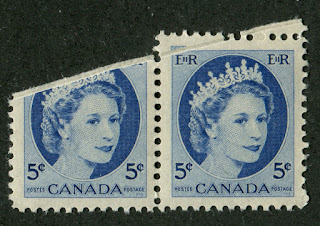Brief Hiatus in Posts and No Longer Posting to Groups on a Daily Basis
I have come to the end of my detailed posts on the Wilding definitive issue of 1954-1967. However, I am way, way behind on my listings of this issue in my E-bay store. So while I could write about a completely different topic, I have decided that it would be best if I completed the listings of the material for this issue in my e-bay store. If you are intrigued about these issues having ready my posts on the topic and wish to view the stamps that I have for sale, the link to my store is: http://stores.ebay.ca/Pristine-Canadian-Stamps/Wilding-Issue-1954-1967-/_i.html?_fsub=13064912013&_sid=1009259433&_trksid=p4634.c0.m322 I expect that listing all the material that I have for this issue will take me at least a full week. Once I have completed it and I am ready to start working on the next definitive issue, which is the 1963-1967 Cameo Issue, then I can start to write posts again about that issue. So if you have read all my posts, I would encourage you to check back here aroun...





